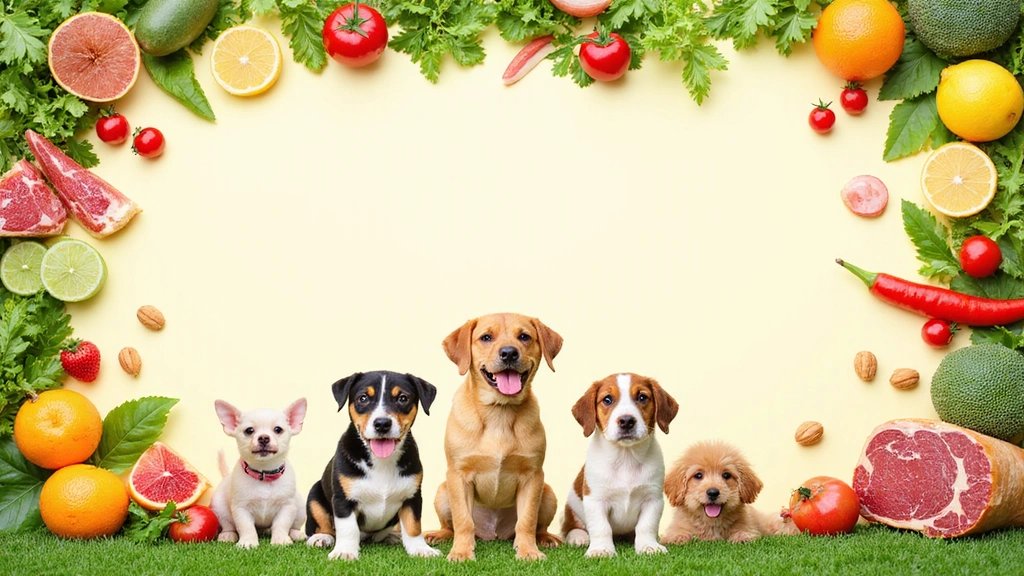Every pet owner wants the best for their furry friends, and understanding pet nutrition is key to ensuring their health and happiness.
In this article, we’re sharing ten essential secrets that can change your pet’s life for the better.
From choosing the right ingredients to understanding portion sizes, these insights will help you create a balanced and nutritious diet for your beloved companions.
Get ready to unlock the secrets to a healthier pet and discover tips that you might not have heard before!
Contents
- 1. Understand Your Pet’s Nutritional Needs
- 2. Choose Whole Foods Over Processed
- 3. Monitor Portion Sizes
- 4. Balance Protein, Fats, and Carbs
- 5. Hydration is Key
- 6. Incorporate Supplements Wisely
- 7. Avoid Toxic Foods
- 8. Experiment with Home-Cooked Meals
- 9. Watch for Food Allergies
- 10. Consult with a Pet Nutritionist
1. Understand Your Pet’s Nutritional Needs

Just like humans, pets have unique nutritional needs that vary based on factors such as age, breed, and activity level.
Understanding these requirements is essential for creating a balanced and healthy diet for your furry friend. For instance, puppies and kittens typically need higher levels of protein and fats to aid in their growth, while older pets may benefit from a diet that is lower in calories but enriched with fiber.
Research indicates that tailoring your pet’s diet to their specific needs can significantly enhance their overall health and longevity. To assist you in this important task, consider the following tips:
– Consult with your veterinarian for personalized dietary advice and recommendations. You might also find useful insights in veterinary diet books that delve deeper into nutritional requirements.
– Evaluate your pet’s activity level; more active pets may require additional calories to maintain their energy levels. To keep track of their weight, investing in pet weight scales can be immensely helpful.
– Monitor your pet’s weight regularly and adjust their diet as necessary. Using food measuring cups can help ensure you are providing the correct portions.
– Lastly, prioritize high-quality ingredients in their food, looking for options that feature real meat and vegetables. You can also explore breed-specific food that caters to the unique dietary needs of your pet’s breed, along with pet health supplements to boost their well-being.
By understanding these essential aspects of pet nutrition, you can help ensure your furry friend not only survives but truly thrives.
2. Choose Whole Foods Over Processed
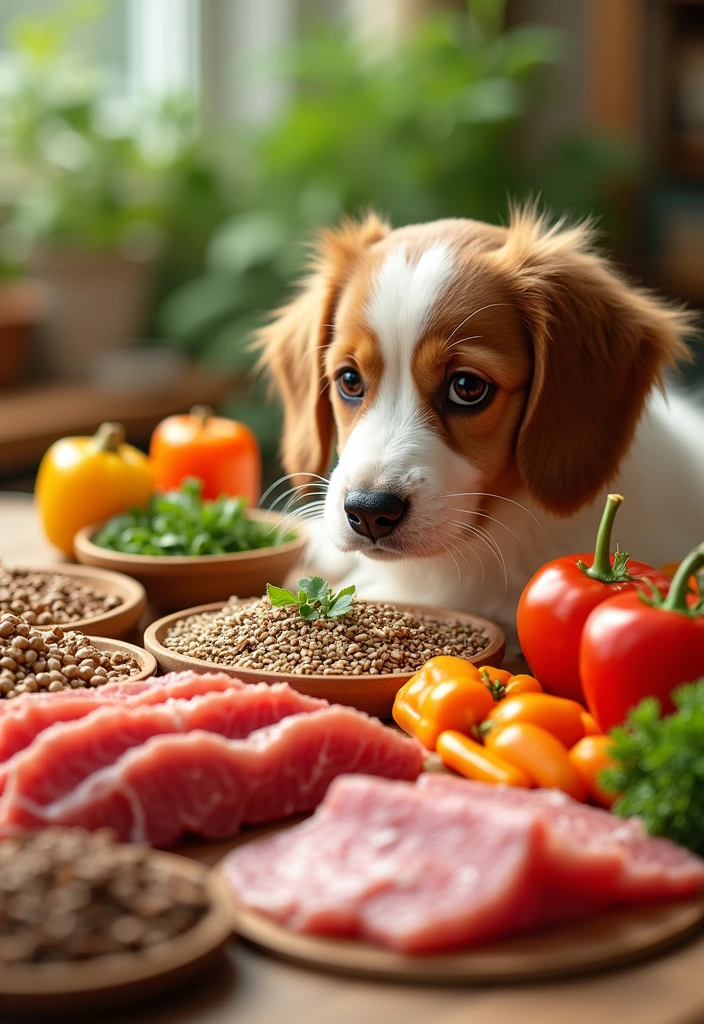
Whole foods are the cornerstone of a healthy diet for your pet, delivering essential nutrients without the unnecessary fillers and additives commonly found in processed options. By choosing whole ingredients, you’re giving your furry friend the best opportunity for optimal health and vitality.
Consider incorporating fresh meats like high-quality meat into their meals, alongside nutrient-dense vegetables and grains. Ingredients such as fresh chicken or turkey, salmon or other fish rich in omega-3 fatty acids, sweet potatoes or pumpkin for added fiber, and leafy greens like spinach or kale for a vitamin boost are excellent choices.
To facilitate this transition, you might find a dog food recipes book helpful for creating balanced meals at home, or you can opt for organic grains that complement your pet’s diet.
Additionally, using food prep containers can make meal preparation easier and more efficient, while planting pet-safe vegetable seeds can ensure a fresh supply of nutritious additions to their meals.
By choosing whole foods, you not only aid in digestion but also enhance your pet’s coat and skin health, setting them up for a vibrant life.
3. Monitor Portion Sizes
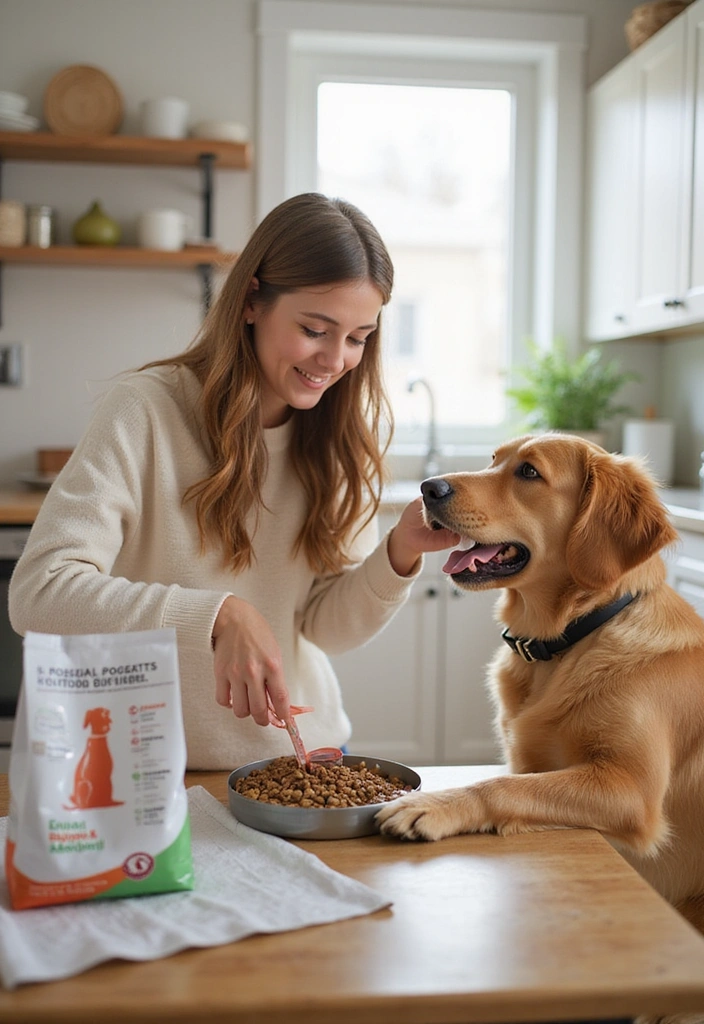
Portion control is a crucial element of pet nutrition that many owners tend to overlook.
Similar to humans, pets can easily gain weight if they are overfed, which can lead to several health issues, including diabetes and joint problems.
To effectively manage your pet’s portion sizes, consider following these tips: Start by adhering to the feeding guidelines provided on the packaging of your pet food, as it serves as a helpful baseline. Use a pet food measuring cup to ensure accuracy in portions. Keep a close eye on your pet’s weight and be prepared to adjust food quantities as necessary. Additionally, consider using portion control feeding bowls to help manage meals, and think about splitting them into smaller portions throughout the day.
To aid in your pet’s weight management journey, you might find pet weight management books particularly useful. For those tasty rewards, using dog treat bags can help you control treat portions effectively. Lastly, for precise measurements, a food scale can be invaluable.
Being mindful of portion sizes can significantly enhance your pet’s quality of life, leading to improved energy levels and, ultimately, a longer, happier life.
4. Balance Protein, Fats, and Carbs
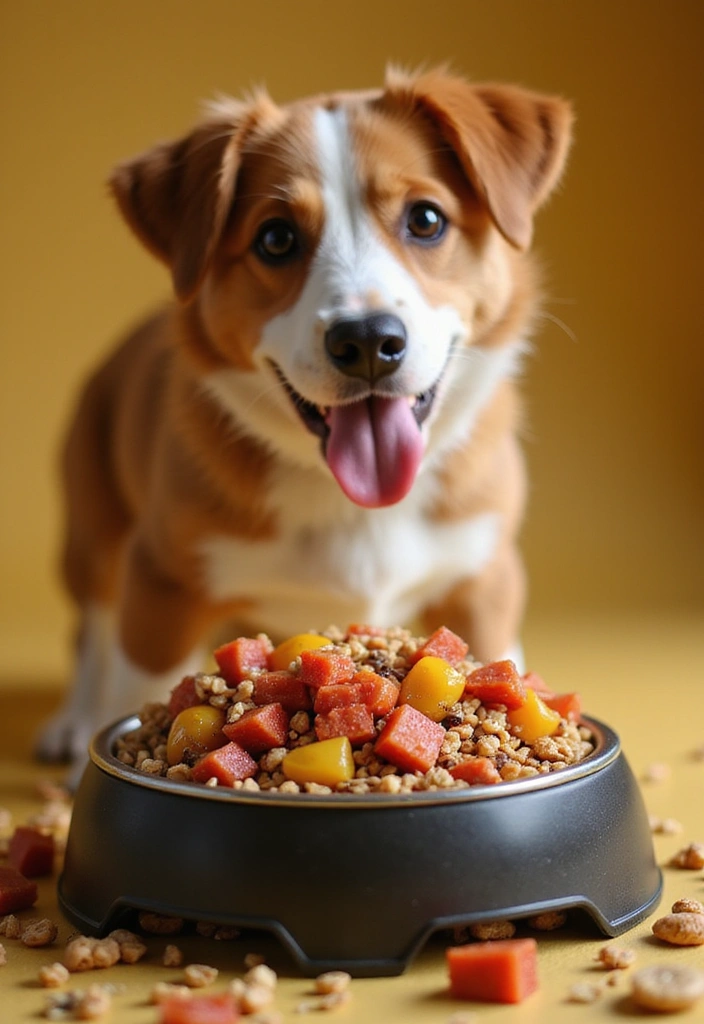
A well-rounded diet for your pet is essential and should include an appropriate balance of proteins, fats, and carbohydrates.
Proteins play a vital role in your pet’s growth and muscle maintenance, while healthy fats are necessary for energy and contribute to a shiny coat. Consider incorporating natural protein supplements into their meals to ensure they receive at least 20-30% high-quality protein.
Including omega-3 fatty acids from fish oil for pets can further enhance their coat health.
When it comes to carbohydrates, opt for complex sources like brown rice or oats, and avoid fillers such as corn or wheat. You can find quality grains that are beneficial for your pet’s digestive health.
Additionally, if you’re looking to create balanced meals at home, consider investing in recipe books for balanced pet meals to guide you. For those keen on understanding their pet’s dietary needs, nutritional analysis tools can help tailor their diet effectively.
Always consult with your veterinarian to fine-tune your pet’s diet based on their specific needs.
5. Hydration is Key
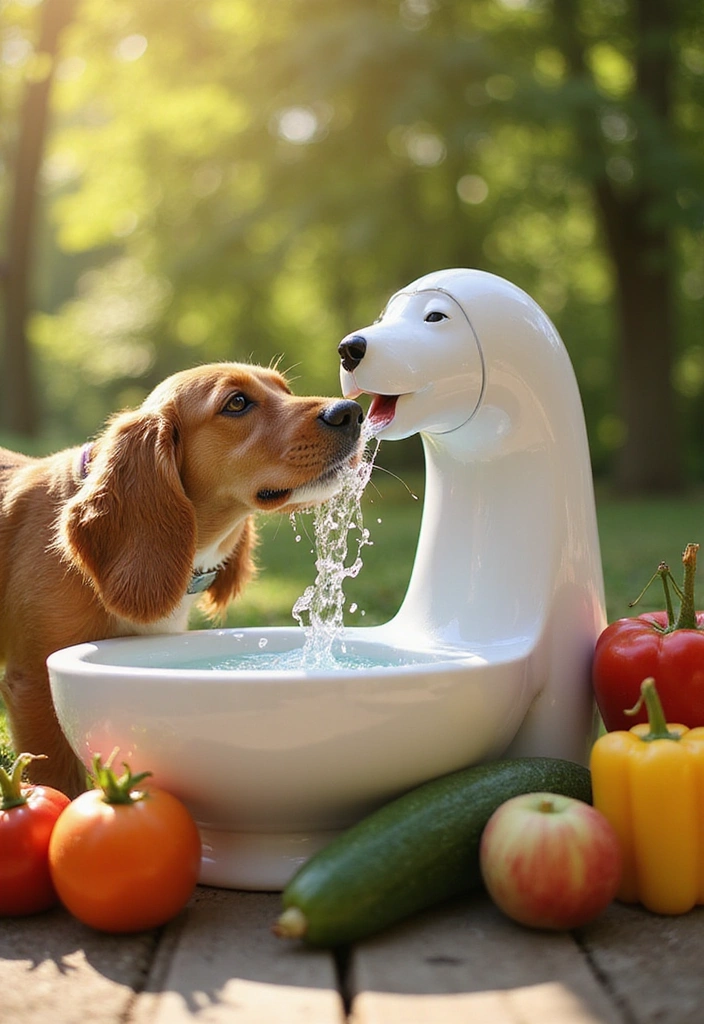
Water is a fundamental yet often overlooked aspect of pet nutrition, playing an essential role in maintaining your furry friend’s overall health. Just as humans require hydration, pets must have constant access to fresh, clean water to thrive. Proper hydration supports crucial bodily functions such as digestion, nutrient absorption, and temperature regulation.
To ensure your pet stays hydrated, aim for them to drink about one ounce of water for every pound they weigh. A great way to encourage your pet to drink more is by using a pet water fountain, which can make drinking more appealing. Additionally, incorporating high-quality wet pet food or pet-safe broths into their diet can add moisture and enhance their hydration levels.
It’s essential to monitor your pet’s water intake and consult a veterinarian if you notice any changes in their drinking habits. For on-the-go hydration, consider investing in pet travel water bottles or utilizing hydration supplements to ensure they are always well-hydrated. Keeping your pet properly hydrated can significantly boost their energy levels and overall well-being.
6. Incorporate Supplements Wisely
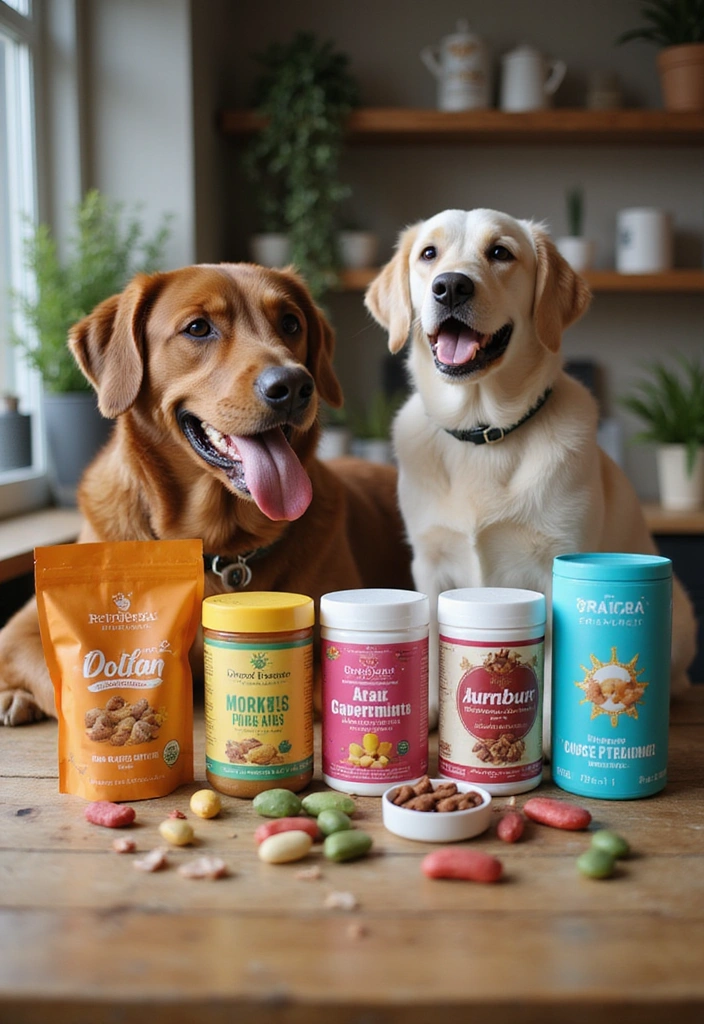
Supplements can significantly enhance your pet’s nutrition, particularly if they have unique health concerns or dietary requirements. However, it’s essential to introduce them thoughtfully and always under the guidance of your veterinarian.
For instance, high-quality omega-3 supplements can improve your pet’s coat health and help reduce inflammation. If your furry friend struggles with digestive issues, consider incorporating probiotic chewables to support their digestive health.
For older pets, maintaining mobility is crucial, and joint health supplements like glucosamine can be vital. Additionally, comprehensive pet vitamin packs can ensure that your furry companion gets all the necessary nutrients.
Lastly, to keep your supplements organized and fresh, consider using supplement storage containers. When integrated correctly into your pet’s diet, supplements can provide a substantial boost to their overall health, contributing to a longer and happier life. Always consult with your vet before starting any new supplement regimen.
7. Avoid Toxic Foods
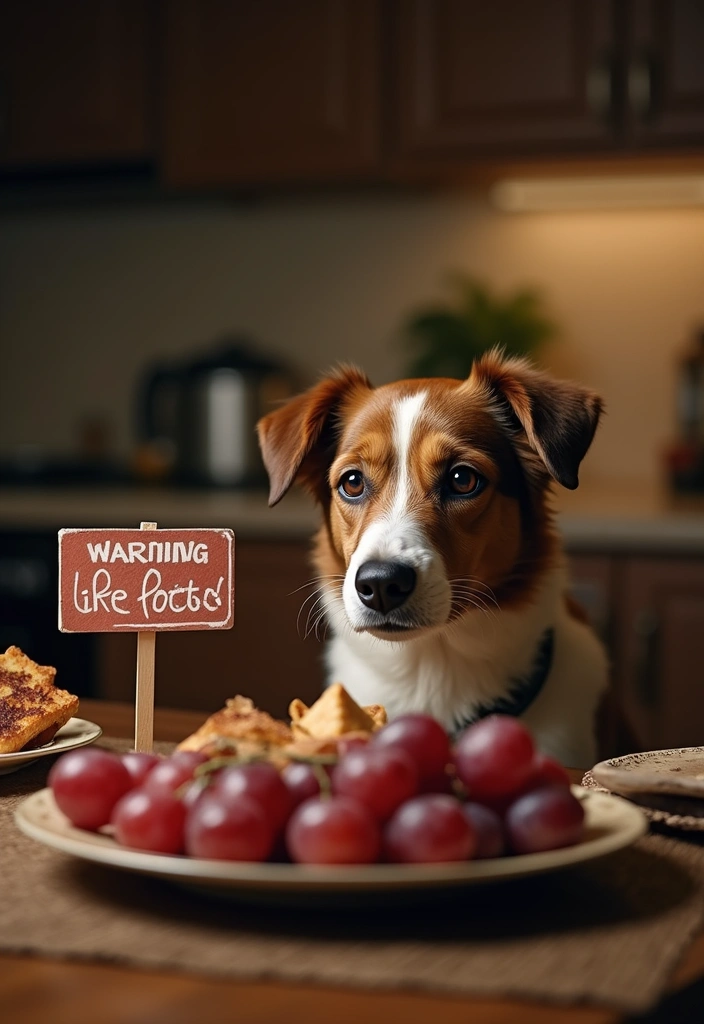
Many common foods can pose serious health risks to our pets, making it essential to know what to keep out of their reach for their safety.
Ingredients such as chocolate, grapes, onions, and garlic can be extremely harmful, and in severe cases, even fatal. To ensure your furry friend’s well-being, it’s crucial to be informed about these toxic foods. Here’s a list of items you should never feed your pet:
– Chocolate
– Grapes and raisins
– Onions and garlic
– Macadamia nuts
To help you provide safe alternatives, consider investing in pet-safe treat alternatives that your pet will love without the health risks. Additionally, having pet health guides on hand can deepen your understanding of safe feeding practices.
It’s also wise to prepare for emergencies with an emergency pet care kit. This way, if you suspect your pet has ingested something toxic, you can act quickly. Furthermore, training books can be beneficial for teaching your pets to ignore harmful foods, while pet-proofing supplies can help you create a safe environment.
Being educated about these toxic foods can genuinely save your pet’s life, so always prioritize their safety and well-being.
8. Experiment with Home-Cooked Meals

Home-cooked meals can be a fantastic way to ensure your pet receives the nutrition they need while indulging in delicious flavors. By preparing your pet’s food yourself, you gain full control over the ingredients and can customize meals to suit their individual tastes.
To get started, consider investing in a quality kitchen equipment like kitchen tools that make the cooking process easier and more enjoyable. Here’s a simple recipe to kick things off:
– 1 cup of cooked chicken (shredded)
– 1/2 cup of cooked brown rice
– 1/4 cup of peas and carrots (steamed)
– Mix everything together and serve!
As you experiment with home cooking, you might want to explore pet-friendly cookbooks for more ideas. Additionally, using meal prep containers can help you store portions conveniently. Don’t forget to check out fresh ingredient delivery services for easy access to high-quality ingredients and consider pet-safe seasoning options to enhance flavors.
Always consult with your vet to ensure that your homemade meals meet all of your pet’s nutritional needs. Home cooking can be a rewarding bonding experience while ensuring your furry friend gets the best care possible.
9. Watch for Food Allergies
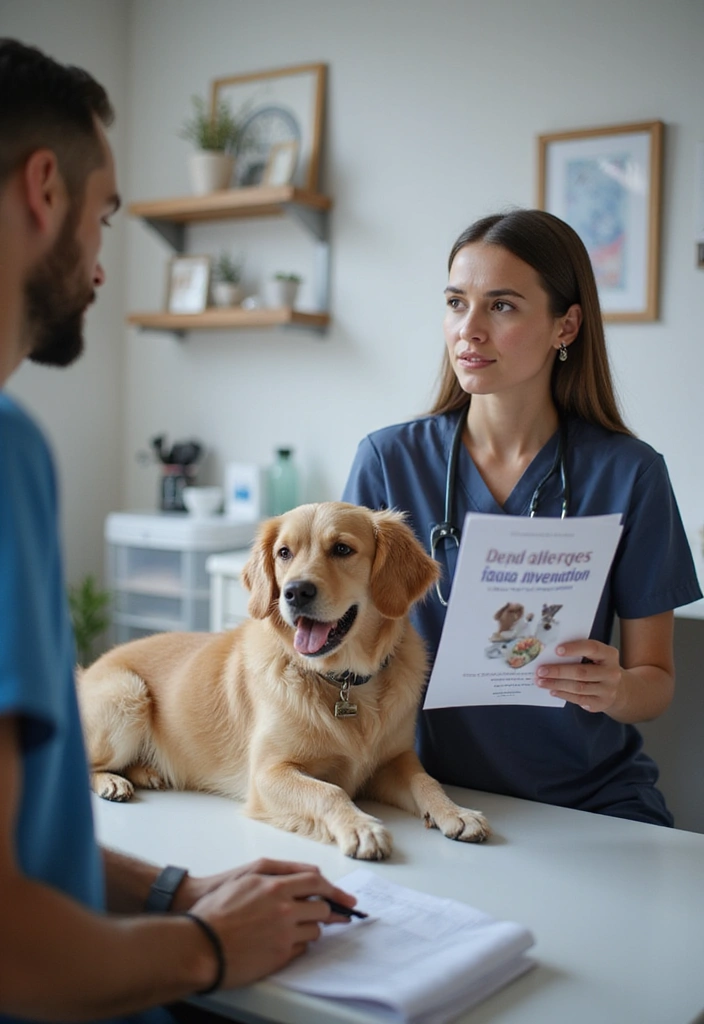
Just like humans, pets can develop food allergies, leading to a variety of health issues such as skin irritations, digestive problems, and even changes in behavior. It’s vital to recognize and manage these allergies for the overall well-being of your furry friend.
Be on the lookout for signs that may indicate a food allergy, which include frequent scratching or licking, digestive troubles like vomiting or diarrhea, and swelling or redness around the ears, paws, or face. If you suspect your pet is suffering from a food allergy, it’s crucial to consult your vet to determine the best course of action.
Consider trying an elimination diet to pinpoint the problematic ingredient and explore hypoallergenic food options, like this hypoallergenic pet food. You can also invest in allergy testing kits to help identify the allergens more effectively. Additionally, using pet skin care products can soothe irritated skin, while veterinary consultation services can provide professional guidance. Keeping a pet health journal can also help track your pet’s symptoms and dietary changes, ensuring you stay informed and proactive in their care.
10. Consult with a Pet Nutritionist
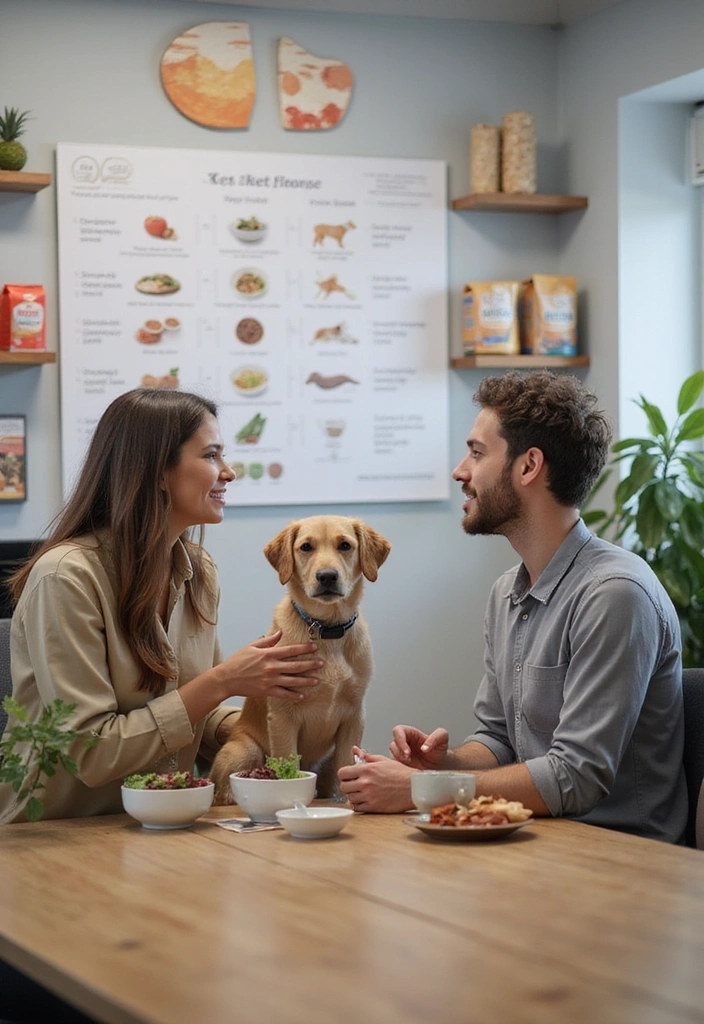
Sometimes, ensuring that your pet’s diet is optimal requires expert guidance, and consulting with a pet nutritionist can be a game-changer. These professionals offer personalized advice tailored to your pet’s unique needs, lifestyle, and health conditions.
With their expertise, they can help you create a customized meal plan that suits your pet perfectly. If you’re concerned about issues such as obesity or allergies, a nutritionist can address these specific health concerns effectively.
To enhance your pet’s diet further, consider investing in helpful resources like pet nutrition consultation services or utilizing pet diet tracking apps that simplify meal planning. For those interested in expanding their knowledge, educational materials such as pet diet books and nutrition analysis programs can provide invaluable insights.
Additionally, experimenting with healthy pet recipe books can help you prepare nutritious meals your furry friend will love. Investing in professional advice and these resources can lead to a remarkable improvement in your pet’s overall health and happiness.
Conclusion
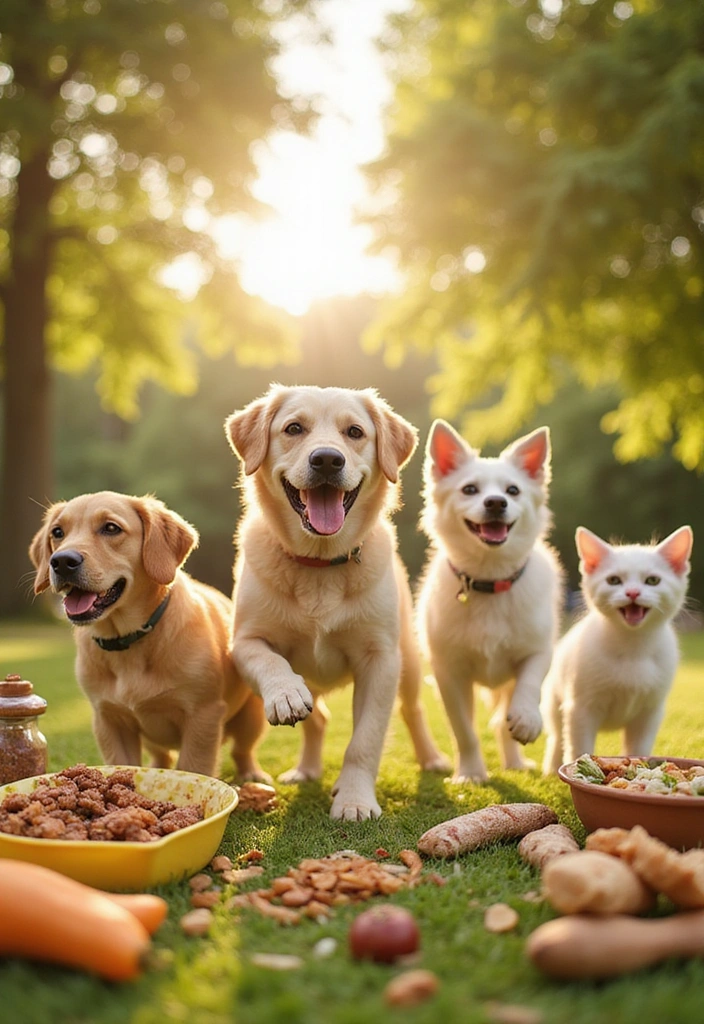
Transforming your pet’s health starts with understanding nutrition, and these ten secrets are your first steps toward a happier, healthier furry friend.
By implementing these tips, you can ensure your pet receives the best care possible.
Engage with your vet and nutritionist for personalized advice, and remember that every small change can lead to significant improvements in your pet’s quality of life.
Note: We aim to provide accurate product links, but some may occasionally expire or become unavailable. If this happens, please search directly on Amazon for the product or a suitable alternative.
This post contains Amazon affiliate links, meaning I may earn a small commission if you purchase through my links, at no extra cost to you.
